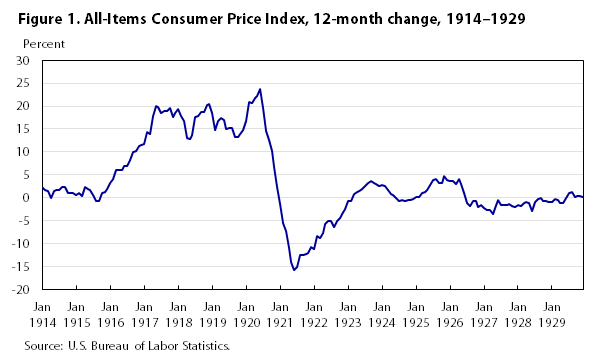1873-96: a good deflation that turned somewhat bad
The 1873-96 episode is a clear example of a “good deflation” when prices fell in many countries by about 2% per year, accompanied by growth of about 2-3% per year (Bordo et al (2004)). Deflation in that era was driven by both a productivity boom (reflecting the “second industrial or mechanical revolution” and the proliferation of railroads across the world (Crafts (2000)), and by a number of major countries (Belgium, Germany, the Netherlands, and Scandinavia in the early 1870s and France later) joining the gold standard.
Although secular deflation was accompanied by positive growth, it was controversial because of its distributional consequences. Groups whose real incomes fell, such as debtors and farmers, or those whose real incomes were perceived to have fallen in an age before price indices, complained bitterly and engaged in often disruptive social and political agitation. In the United States, this was manifested in the free silver movement and the rise of organised labour. In Europe it appeared in the growth of both labour unions and labour political parties and in a demand for tariff protection by agricultural groups.
Although real output grew on average in the deflation episode of 1873-96 in most countries, growth was punctuated by several recessions (1873-75, 1884-85, 1890-96), the worst of which was the last which may even possibly be characterised as bad. It began with the Baring Crisis of 1890, when Argentina defaulted on its debt. This shock led to banking crises (and stock market crashes) in London, elsewhere on the European continent, the United States and parts of Latin America, especially Brazil (Bordo and Murshid (2003), Triner (2003)). Recession was further aggravated by a wave of banking panics which began in the United States in 1893 and spread to Europe (especially Italy) and Australia (Bordo and Eichengreen (1999)).
1837-43: bad deflation
An earlier 19th century episode of deflation from 1837-43, often viewed as bad, began with financial crises in London and the continental Europe (Kindleberger (2000)) and especially in the United States in 1837. Another wave of crises occurred in 1839. In the United States, debate still swirls over whether the crisis and deflation reflected the “Bank War”, the struggle between President Andrew Jackson and Nicholas Biddle, President of the Second Bank of the United States (an early central bank) (Rousseau (2003), Wallis (2003)), or events in Europe such as a series of bad harvest failures in England, which led to the importation of wheat from continental Europe and a drain on the Bank of England’s gold reserves leading it to raise its discount rate and precipitate capital flight from periphery countries, especially the United States (Temin (1969)). The annual data for this period may be subject to some questions about their accuracy. For example, although prices fell by 5.6% in the United States, 2.1% in the United Kingdom and 2.0% in France, narratives by contemporary observers viewed the episode as one of serious recession (Thorp (1926)). Available measures of real GDP show an increase in the United States of 3.9% and of 1.3% in France. The United Kingdom, in contrast, experienced a real GDP decline of 2.6%.


